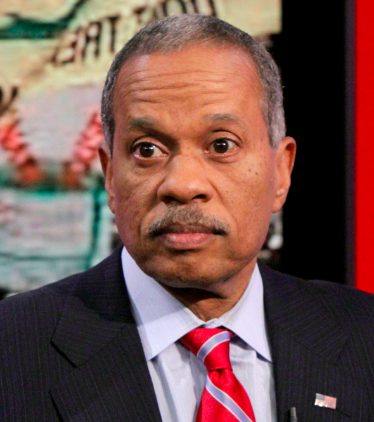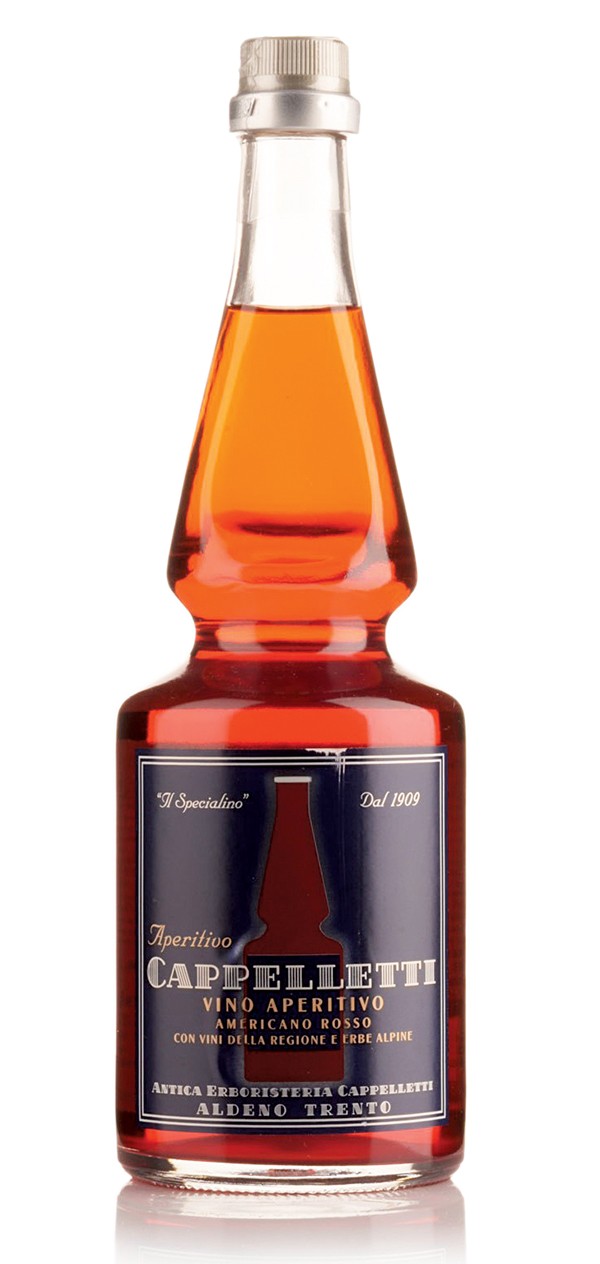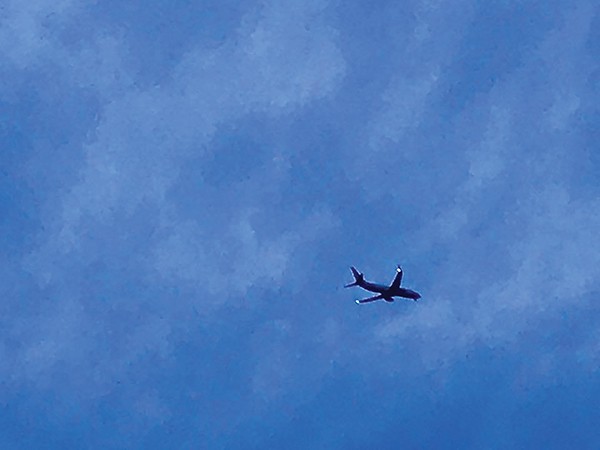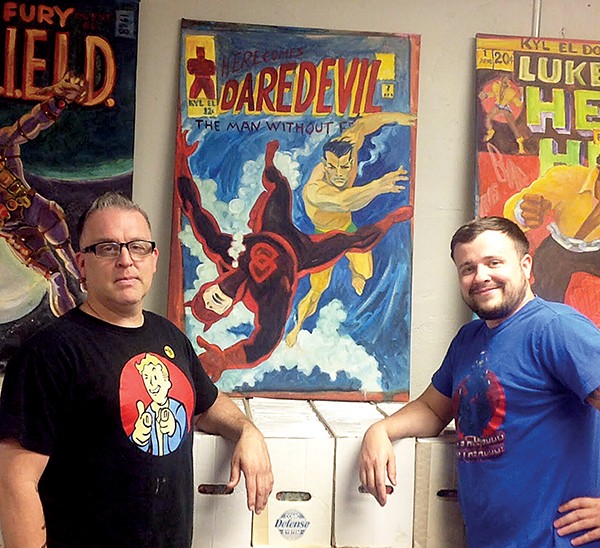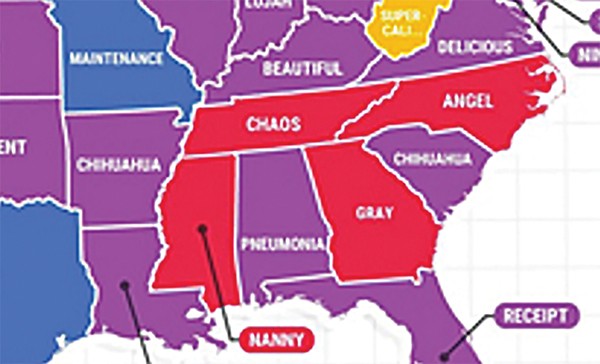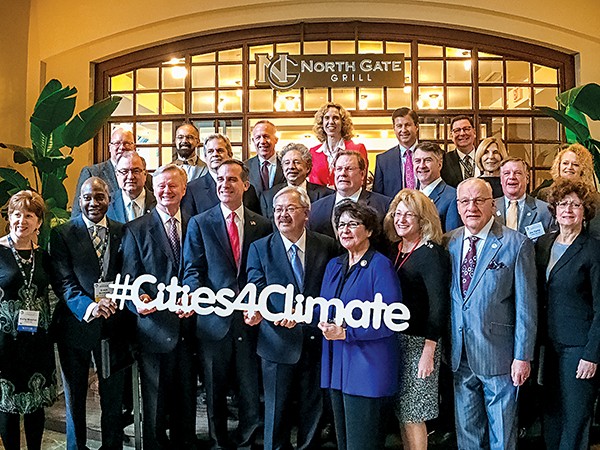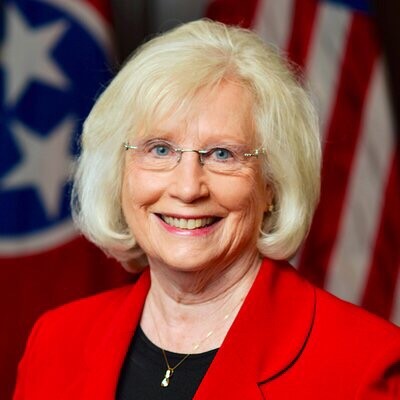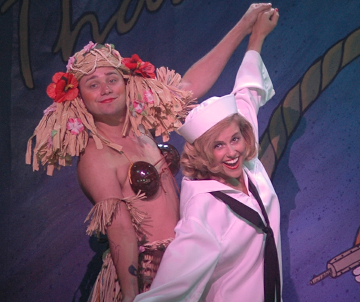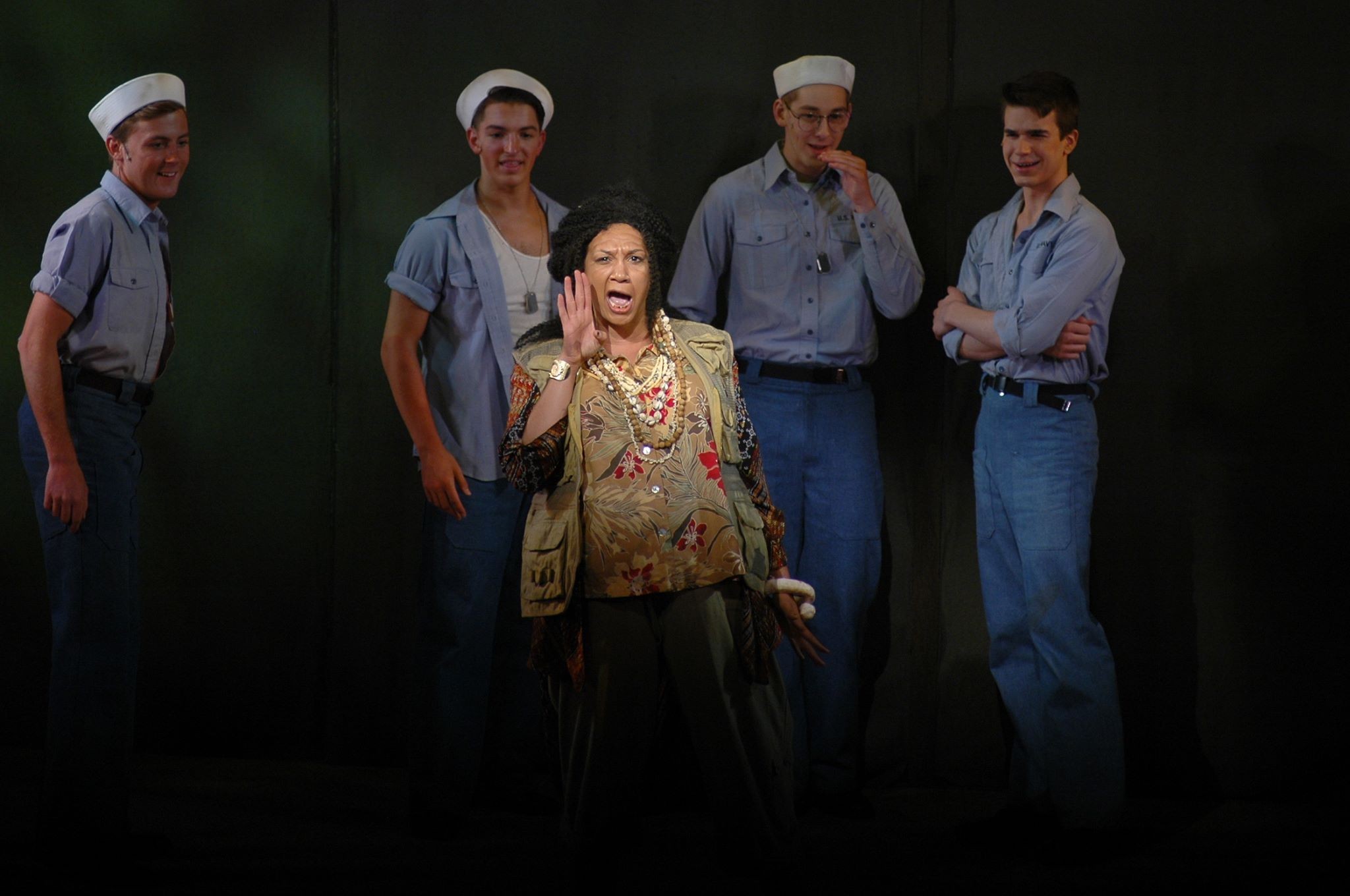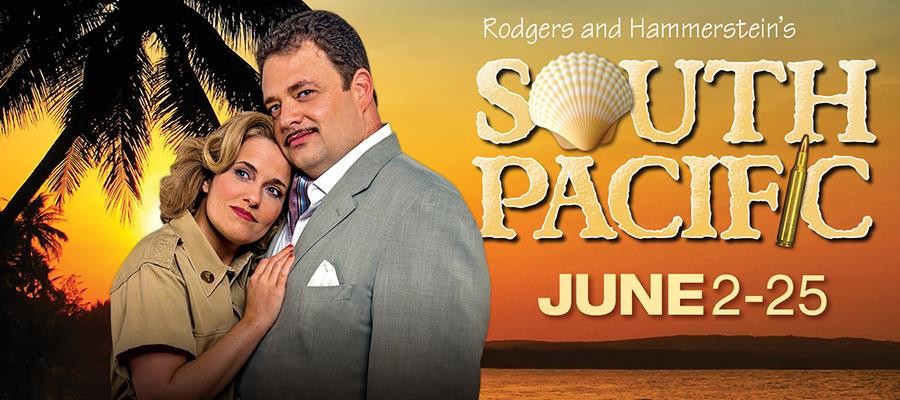It is a time, as we all know, when relations have become complicated again between the United States and Russia, formal allies during two 20th-century wars, deadly opponents during decades of the undeclared Cold War, and, at least, theoretically, friendly for some years until the relatively recent past.
It is a time when many American politicians are again declaring that a resurgent Russia — no longer Communist and deprived of peripheral portions of the old Soviet Union that are now formally independent — has become this nation’s most formidable adversary once again.
But not all American politicians: Our chief domestic drama now centers on the fact that the administration of our newly installed president, Donald Trump, a man of uncertain purpose despite his ad hoc Republican identity and his shrilly stated “America first” declarations, is under suspicion of ongoing collusion with the regime of Russian strongman Vladimir Putin, a former KGB official who is suspected of having arranged the cyber-hacking and sabotage of Trump’s 2016 presidential opponent, Hillary Clinton.
Hopefully, a number of investigations now under way will clear up this mystery. But, for most Americans, another mystery remains. No longer an Iron Curtain monolith per se, Russia today has a formally democratic structure, and Putin, now president of his nation and ensconced in a dominant leadership position for the entirety of the 21st Century, is subject to election.
But there remain strong suspicions about the validity of Russian democracy, and numerous students of the country insist that dissent, whether by political opponents or by journalistic inquiry, is dangerous and potentially fatal. Meanwhile, Russia’s interventions in Syria and neighboring Ukraine have aroused fears of a renewed imperialism.
Though much has undoubtedly changed about Russia, a statement made by the great British leader Winston Churchill at the conclusion of the Second World War still represents the American state of mind: Russia, said Churchil in a description suggestive of the famous Matryoshka dolls that incorporate layered images within images, “is a riddle wrapped inside an enigma inside a mystery.”
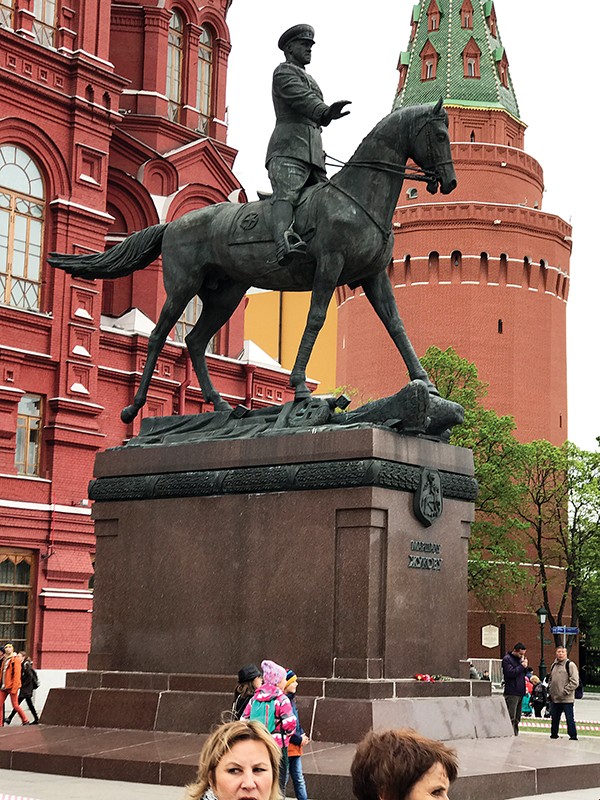
Marshal Zhukov, the conqueror of Berlin, in front of the Russian Historical Museum
All of which encouraged me, in a bucket-list mood, to get a glimpse of the Russian reality for myself. Assisted enormously by the office of 9th District Tennessee Congressman Steve Cohen, I got my visa (no easy thing) and boarded a flight in mid-May for a week in Moscow. I am under no delusion that so brief an exposure entitles me to speak with authority about the nature of that aforesaid riddle. But it certainly opened my eyes.
There came an afternoon, early in my visit, when, in the course of doing a little sightseeing, I disembarked from a tour bus in the general vicinity of the Kremlin, thinking I could fairly easily find my way “home” to the Best Western Plus Vega Hotel and Convention Center some 12 miles away in Moscow’s Izmailovo District.
The problem was that the Kremlin is not a single place; it is a district in itself, a walled-in former fortress of almost 70 acres, encompassing five palaces, four cathedrals, a plethora of monuments, and various official buildings, including both the seat of government and the residence of President Putin, the successor in power to the various czars, Soviet premiers, and Communist Party general secretaries who have ruled the vast Eurasian land mass that is Russia.
It is said that that Moscow is some 20 times the size of Washington, D.C., and, while that is misleading, in that the American capital’s teeming Maryland and Virginia suburbs expand its metropolitan reach enormously, it is still likely that the enclosed Kremlin area is large enough to incorporate most of the important public buildings of Washington, including most of the mall that stretches from the Capitol to the Lincoln Memorial.
Which is a way of saying that the periphery of the walled-in Kremlin (the word means “citadel,” roughly) is too extensive to function as a single landmark. And, further, that the Metro station I entered — the one embedded in a glossy, American-style shopping mall with brand-name boutiques and a McDonald’s that teemed day and night with Russian patrons — did not lead as directly as I would have liked to the Metro’s blue line, the one leading to the Partizanskaya station in the Izmailovo district.
Advice to future American travelers to Moscow (of whom, I suspect, there will be an increasing number, revived Cold War or no revived Cold War): While learning enough of the complex Russian language to get by as a tourist, unaided, is a seriously daunting task, one should at least try to master the phonetic sounds of the cyrillic alphabet. That will help somewhat to distinguish one unfamiliar name from another, though there has been a tendency in recent years to render significant public signs in Moscow in both Russian and English. Restaurant menus, directional indicators to various important public places, and, yes, subway signs get this treatment.
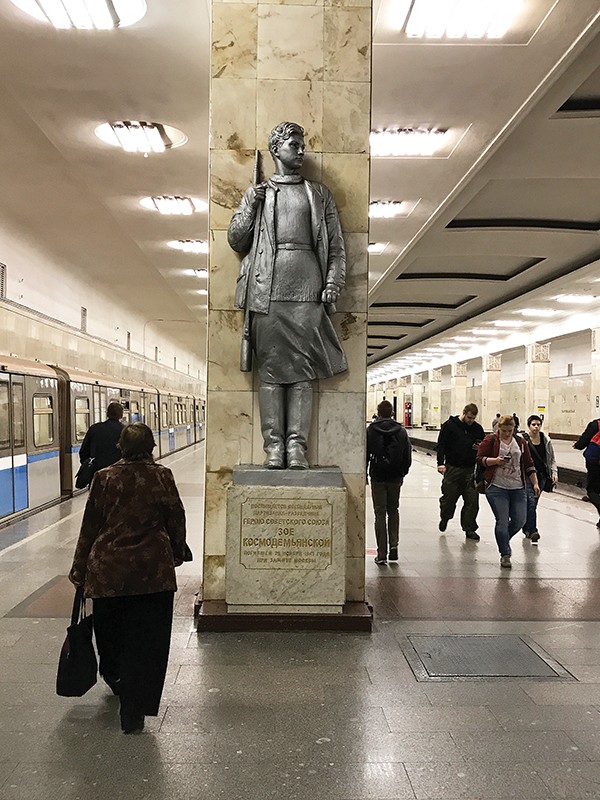
Statue in Partizanskaya station of an 18-year-old Russian partisan, killed in the Great Patriotic War (World War II)
The problem is that this bi-lingualism, so clearly meant as a convenience to tourists, seems too new to have affected the mass of ordinary Muscovites. Stop someone in a central area of Berlin or Paris or Rome to ask directions in English, and there is a fair chance that, with a minimum of trial and error, you’ll manage to get yourself a serviceable dialogue. Not so in Moscow, particularly so in the city’s Metro (subway) stations, where the helpful English subscripts are less than a year old.
What can and does happen is that you often find yourself trying to communicate by a means uncannily like a game of charades, with hand gestures, purposeful pointing, and exaggerated facial expressions. In six days in Moscow, I never encountered anything remotely suggestive of an animosity to Americans, though I did suspect that the proud Muscovites found it not worth the bother to digest a foreign language, particularly one emanating from a once-rival superpower.
So getting to the Metro system’s blue line on the afternoon in question was, for me, a downright Odyssean quandary, involving any number of wrong-way wanderings and thwarted dialogues. In my less frantic moments, I harbored the sardonic thought that I would have been better off if some of the darker warnings I’d had from people back home (before the trip and via texts during it) had been on target.
That is, if I’d been under surveillance, shadowed by agents of this presumed adversary regime, one or more of my surreptitious minders might have broken cover long enough to point me in the right direction. The fact is, as I’d assured all my solicitous advisers back in the States, I was neither important enough to be shadowed nor so dull that I wouldn’t notice it if it happened.
And, as far as incriminating videos involving playfully incontinent hookers in my hotel room, a la circumstances imputed by one intelligence source to an erstwhile Trump visit, you can be sure that wasn’t going to happen.
A little more about the denizens of the Moscow Metro — and the population at large — before dissertating somewhat on my Moscow hotel, a revelation in itself.
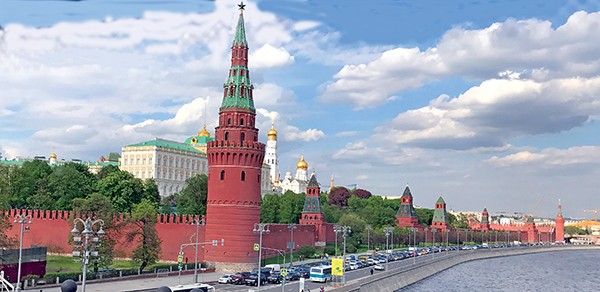
the bridge
As I said in one of my fairly frequent Facebook posts during my several days in Moscow, the typical Metro rider is a jeans-wearing millennial glued to a cell phone. Having not ventured beyond the capital city itself, I cannot vouch for the rest of Russia, but, the aforesaid linguistic issue notwithstanding, the inhabitants of Moscow are much more like you and me than they are different.
Many of us — even our own millennial population — were raised on Cold-War shibboleths depicting Russia as a “third-world” nation despite its naked power as an “evil empire,” a place where hot water was not available, public transportation unreliable, cars unavailable, and public conveniences non-existent. The Russian subject (“citizen” seemed too free and easy a term) was characterized as a robot-like serf with a brain washed so much and so often to be barely capable of real thought.
In several of my Facebook posts describing the flora and fauna that I encountered (well, the fauna, anyway; my late wife Linda was the botanist, not me) or in conversations upon my return, I reported such phenomena as the multiplicity of BMWs, Audis, and Mercedes on the heavily trafficked (and well-paved) thoroughfares of Moscow; the plethora of hip oases in the mode of Cooper-Young or Overton Square; the ubiquity of American rock-and-roll in bars, bistros, and on elevators; and the even more obvious omni-presence of familiar commercial brands: McDonald’s, Domino’s, Prada, Apple, Canon, Sony, Levi’s, Colgate, Coca-Cola, Avon, Black & Decker, Dolby, G.E., Mary Kay, Dior, etc., etc. (Not to mention the ever-available Uber!)
A friend in Memphis, mid-trip, emailed me to suggest — whether facetiously or in earnest — that what I was seeing could be branded by the name “Potemkin.” That was a reference to one Grigory Potemkin, a seedy courtier and entrepreneur of the 18th century who, in order to impress the touring Empress Catherine II, constructed a series of make-believe villages along the Dnieper River, using false fronts which he assembled and re-assembled in advance of the movement downstream of Catherine’s traveling party.
But no, the all-too-evident modernities of Moscow and the abundant splashes everywhere of urban affluence are not cases of the Potemkin village, unless the proprietors of the brand names sampled above are in on the scam. Making allowances for conspicuous differences of a linguistic, architectural, and, undoubtedly, political nature, the Moscow of 2017 would seem to be both more prosperous and more contemporary in its ways — even in the would-be hipsters sporting “Fuck You” and “Meh” T-shirts — than most Americans would imagine.
Some of this is undoubtedly due to Russia’s burgeoning trade in its sizeable oil and gas resources; much of it, too, has to do with commercial relationships with the West that are by no means one-sided. I mentioned my hotel: Its very name, Best Western Plus Vega Hotel and Convention Center, advertises its pedigree. It is one of numerous plush hostelries in Moscow that speak to the fact of multinational corporate affluence.
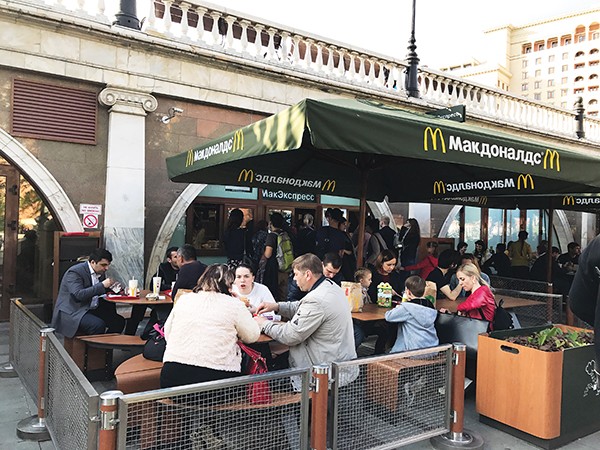
at the entry to the Kremlin
Numerous such high-rise palaces, many clearly foreign-owned, dot the city’s landscape, catering to both an international clientele and what would seem to be an indigenous upstart population. The unmistakeable sound of Russian was the dominant language in overheard conversations at the Vega, as in the pricey clothing stores in Moscow’s several multi-story shopping malls, the oldest and best-known of which, the government-owned GUM, directly adjoins Red Square and the Kremlin.
It is hard to tell whether a significant middle class is developing in Moscow (which, in the years immediately following the fall of the Soviet Union in 1989-91, experienced a fair share of oligarchic despotism) or whether it is the present status of fluctuating international currencies that favors the current conspicuous consumerism on display.
As of May 2017, the Russian ruble was worth a shade less than 2 cents on the American dollar. A charge of $50 (the cost of an opportunistic cab driver’s assessment for a roundabout ride to the hotel from the Domodedovo Airport, 37 miles away) required a payment of 3,000 rubles. Not bad, but I was reliably informed later on that I could have bargained that way down; I did, on the way out of town later on.
Forget the third-world stories. Everything in the Best Western Vega was new and shiny and well maintained. Everything worked. Besides a posh 24-7 restaurant, there was a sizeable dining area featuring three lavish buffets, each offering an abundance of well-prepared indigenous and standard international fare for the equivalent of $12. And we’re talking cuisine, of the sort requiring the expertise of Susan Ellis and the rest of the Flyer’s food-reviewing stable. Housekeeping and amenities were superb.
For purposes of comparison, the two hotels nearest the Tennessee state Capitol in Nashville might ask a minimum of $350 a night, depending on season and availability. A sum considerably less than that amount purchased five nights at the Vega, more than comfortable but mid-range price-wise by the measure of an online search of available hotels.
Numerous night spots were in the immediate vicinity, including a karaoke joint wherein, my ears suggested, some would-be mezzo soprano was having a go at a Dionne Warwick oldie, and, charm of charms, a short walk from the hotel was the Disneyland-like Izmailovo complex, whose fairy-tale towers — newish and candy-colored, but built in the country’s long-gone medieval style — housed a mile or two of stalls selling all kinds of souvenirs, including artifacts of the Soviet era. And offering free shots of vodka to the browser. Now, that was indeed a Potemkin Village, and Empress Catherine would have been as delighted by it as I was.
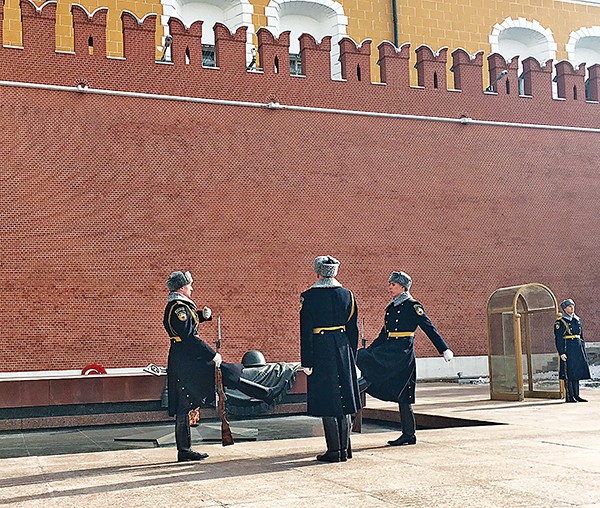
Changing of the guard in Moscow’s Red Square
For at least half of my stay in Moscow (and the most productive half, by far), I had the good fortune of being shown around by a talented young tour guide named Ksenia Terenteva. Still in her mid-20s and of provincial origins, she had mastered several languages, including English, in which her proficiency, though fluid and idiomatic, ranks in her estimation as being only third-best, after her prowess in her native Russian and Spanish.
We took a sight-seeing boat trip down the Moscow River, the main backdrop of which was the same Kremlin vista which forms the recurrent prop for nightly cable reports on CNN, MSNBC, and Fox. In that context, it always appears other-worldly and menacing, like the fortress it originally was. It appears otherwise to one floating downstream in an excursion boat, seeing the vast complex in bas-relief against a gorgeous blue sky, its several cathedral spires competing for the eye’s attention, with the whole of it set off the rest of an eclectically designed Moscow skyline and underscored by the steady stream of commuter traffic on the riverside roadway at its base.
Seen that way, the Kremlin comes off as part monument, in the manner of the Houses of Parliament in London, and part tourist eye candy — especially as one sees it in the context of the apartment buildings, hotels, greenery, and other official buildings and historical structures of its immediate surroundings.
Essentially, Moscow boasts three dominant architectures: medieval structures, like the beautifully ornate onion-bulb churches (one of which, the Cathedral of Christ the Savior, was razed under Soviet dictator Joseph Stalin but restored in the last decade); monolithic block-sized Stalin-era apartment and office buildings as well as several huge baroque-style structures (called the Seven Sisters) commissioned by the dictator; and modern, even ultra-modern, skyscrapers that suggest Atlanta, Manhattan, or, in fact, Anywhere, U.S.A.
On our boat trip, Ksenia pointed out an enormous amount of scaffolding on the far bank, just to the east of the Kremlin, where, she said, an oversized new park is under construction — a showcase playground (“a big Central Park,” she called it) that will be divided into four parts, each of which will somehow simulate the climate and characteristics of a different season. This new waterfront wonder is due to be finished by 2018, when Moscow will host the World Cup in soccer. The new super-park will co-exist with the sprawling, grandly landscaped 300-acre Gorky Park downriver, in effect, book-ending the Kremlin and the rest of the central-city waterfront.
Numerous signs around town, as many in English as in Russian, advertise the imminence of the World Cup, and elsewhere along the Moscow riverfront, as in the city center, new grand hotels are being built and others renovated under the aegis of Hilton and Radisson and other marquee chains to house the expected minions who dote on the game and are sure to be flooding Moscow.
An inevitable aside: No one should be surprised if, by the time of the first game of the Cup, due to begin in June of next year in Luzhniki Stadium, it should be complemented by some new structure bearing the name Trump. And that would be an appropriate symbol of the latest permutation in the affairs of the city of Moscow and the nation it administers.
That necessarily returns one to the subject of politics, which I expect to cover in more depth in a projected follow-up article in Memphis magazine. Some nutshell moments, for now: To my disappointment, while the cable on my flat-screen hotel TV could yield up some vintage Nirvana and other cultural offerings (including serious ballet, like the superb version of Tchaikovsky’s Swan Lake I saw done bravura-style in an adjunct building of the Bolshoi Theatre), it lacked access to CNN, MSNBC, or Fox, the main conduits of news from America.
The nearest equivalent were several Russian news channels, a couple of which, including the well-known RT, broadcast in English, as did a Chinese channel. All of those, during my stay, focused on what was then the ongoing world tour of President Trump, and, while they seemed reliably credible on the details of his itinerary, they avoided mention of the ongoing collusion investigation in America.
There was one exception — a Russian-language channel which offered a summary of the situation one night. I have no idea what the Russian commentary was saying, but the montage of images — Trump, FBI director James Comey, and members of Congress, among others — were familiar and in proper chronological order.
Such conversations as I had about political matters, mainly with Ksenia, suggested that Russians have a sense of things that is basically a mirror image of what Americans believe. In their telling, it is not Russia which meddles in the affairs of other nations and has committed atrocities in Syria, but America. (As if to support this notion, American commandos and air units operating in Syria did, in fact, account for inadvertent civilian deaths in a raid on a presumed ISIS stronghold that week.)
Trump is hardly regarded as statesmanlike (Ksenia referred to him as an “ill-prepared showman”), but former opponent Hillary Clinton fares worse. She is spoken of as harshly as Putin is over here, and the first time I ever heard the name Seth Rich was from Ksenia, who had picked up from Russian media the notion, pushed in America by Sean Hannity of Fox News, that Rich, a former Democratic National Committee staffer killed in a burglary last July, had been the actual donor to Wikileaks of material embarrassing to Clinton’s presidential campaign and had paid for that transgression with his life.
I had hoped to have a conversation with one “Susie,” a member of the dissident Pirate Party of Russia, about the Russian political climate as it affected her, but — no other way to put it — she had second thoughts about talking to me. And I can only conjecture as to her reasons.
For more from Jackson’s trip, see the July issue of Memphis magazine.
